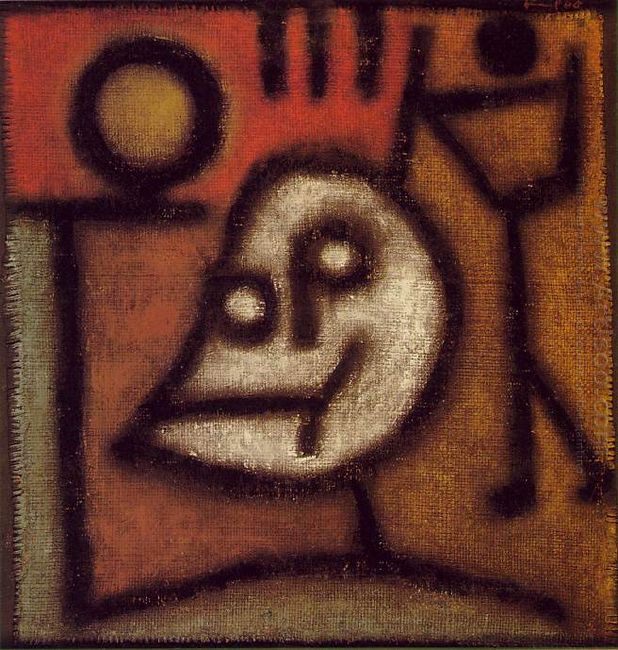Death and Fire was made in the last years of the Paul Klee’s life when he was seriously ill. The whole painting was filled with a strong bleak and sad atmosphere and full of artistic appeal.
The genre painting was permeated with a strong atmosphere of desolation and sorrow. This was not a subjective speculation, but the painting’s artistic appeal. The heavy black lines hided a heavy load. The pale character comprised of symbol languages in the middle was like a skull, making people feel an omen for death. If carefully observed, the eyes and mouth of this character was composed of three letters T, O and D. And the word “tod” consisting of these three letters meant death in the German. Paul Klee made a very special processing of this image: on the one hand, he adopted the combination of pictures and words, which looked new and interesting; on the other hand, this image looked like the figure facing the left from the contour, but faced everyone in the facial treatment. This abnormal processing made the painting full of wit and humor and also reflected the painter’s unique sense of humor. This distorted image was like the painter’s involuntarily helpless and irony for the life or the death. This wonderful treatment also highlighted the artist’s joy of life, artistic talent and personalities.

On the lower right of the painting, there was a small figure consisting of thick lines, constructed as the hieroglyphic villain, which was stinging the head. It was the symbol of the virus or disease. The figure’s left hand held a circle which was both the symbol of the sun and the time. It meant that the death was an inescapable outcome and a process, so that the artist was able to easily face it. As the painter wrote to his friend, “Of course, I am not casually walk on the road which leads to the death, all my works have at one point and declared that the final period is approaching.” Because of the deep understanding of death and life, so he calmly faced it without losing the last joke and humor for the life. The color of the expressionism painting had a depressing feeling of terror. The red background had a smell of death and the image of white figure was like the patient sitting in the blood. The entire colors had stale tomb murals of the gas and various symbolic languages also had a color and a mysterious taste. Klee’s works had the fantastic color which was not purely abstract or realistic, but a kind of comprehensive art: the art of self under the painter’s unique control. His painting language and style influenced many later artists.